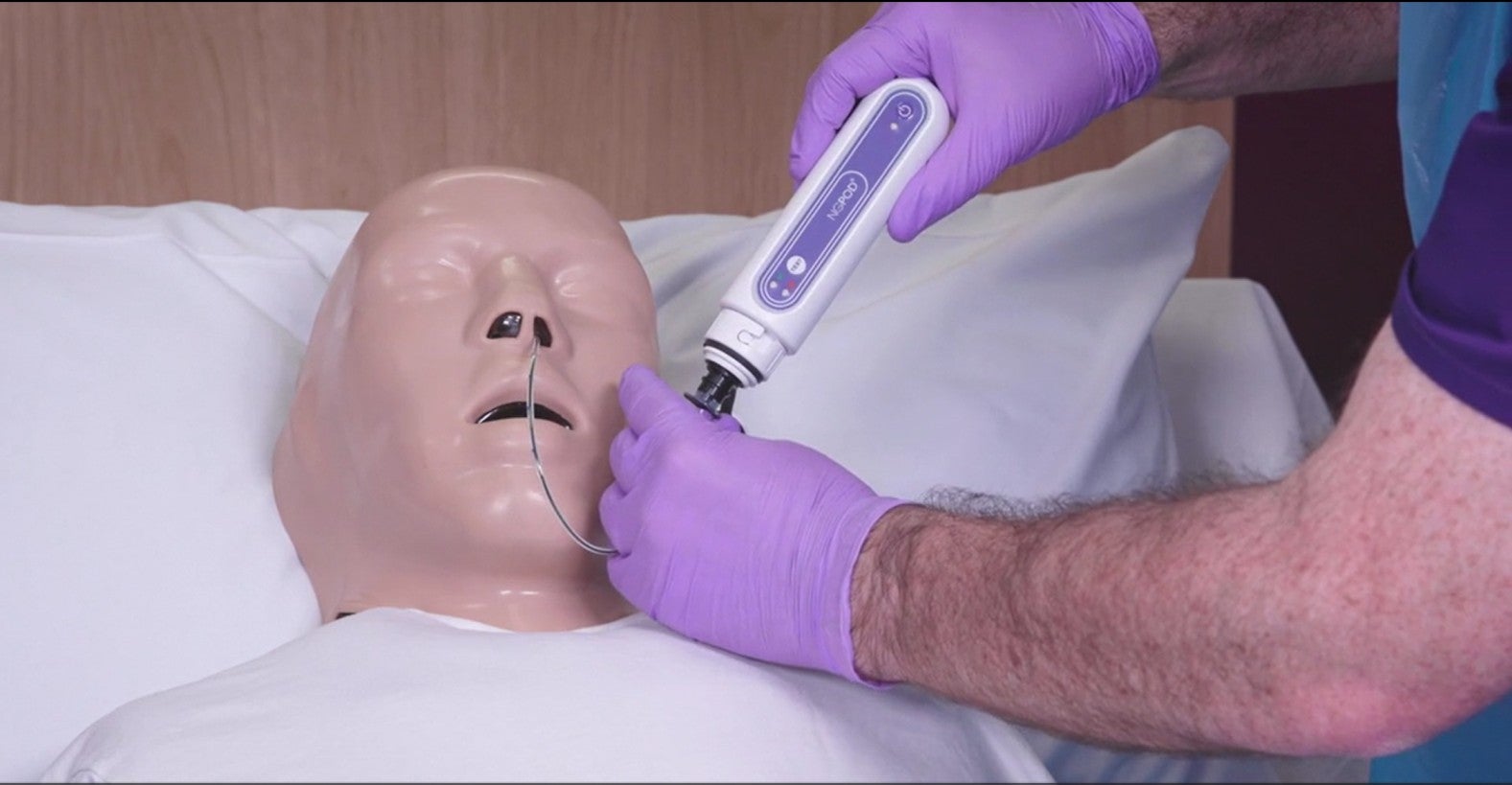
UK based medical device company, NGPod has released results from a clinical trial data assessing its NGPod device for correct placement of nasogastric tubes.
The trial, detailed in a paper published in the BMJ Journal of Nutrition, Prevention & Health, introduces the electronic device which could eradicate the problem of incorrectly inserted feeding tubes.
Every year, nurses insert over a million feeding tubes into patients’ stomachs to administer nutrition, hydration, and medication. Studies show that incorrect placement of NG tubes happens in 1-3% of all insertions, causing serious consequences such as delays and even death.
Currently feeding tube misplacement is the fourth most common cause of ‘Never Events’ a term used by the NHS for serious incidents that are preventable by following guidance or safety recommendations.
Marcus Ineson, Chief Marketing Officer at NGPod told Medical Device Network the device is already saving the NHS money.
“Legacy methods that have been used for 20 years are flawed. For example, with pH strips fail in up to 45% of cases because you can’t get aspirate, which means the patient has to have an X-ray that causes on average about an eight-hour delay to treatment,” said Ineson. “If the tube is in the right place, you get a green light in 20 seconds and that is 20 seconds versus trying to get aspirate and then waiting eight hours for an X-ray which is just huge.”
The handheld NGPod device uses a fibre optic sensor that is inserted into the feeding tube and eliminates the need for aspirate while sending light signals back to a handheld device. The checking process gives the user a definitive yes/no answer on correct placement which can be achieved in twenty seconds.
Ineson also explained that using the product was straight forward and would require a maximum of 20 minutes for a professional to learn how to use the device. He added that barriers had been set up in the device to prevent human errors.
The clinical trial consisted of 154 adult patients across three NHS secondary care sites. Researchers compared the performance of NGPod against the current pH strip procedures and found that it reduces the need for patients to use an X-ray by 61% while improving safety and human error.
“The best way of getting this adopted and really any medtech out is if you’re replacing a legacy method, and we’re now having sites that are taking pH strips off the ward and implementing NGPod becomes the only method of first line energy tube placement,” said Ineson.
The device is currently in 12 hospitals in the UK with another eight scheduled to be implemented in the next six months. Commenting on the company’s commercial strategy, Ineson explained NGPOD already has distributors in Australia, New Zealand, Ireland, France, Poland, Croatia and a few countries in the Middle East.
“We’re hoping that some point in 2024, as long as the 510K clearance goes through, we will be able to start the process of launching in the US”.
Despite the company’s aspirations to break into international markets they remain firm on keep production within the UK. He said: “If you offshore your manufacturing and outsource this early on, you never learn to manufacture your own product and that is very dangerous from a continuity process. In effect you don’t have the in-house capability to manufacture, and you don’t really have the capability of effectively moving your manufacturer if you need to.”



